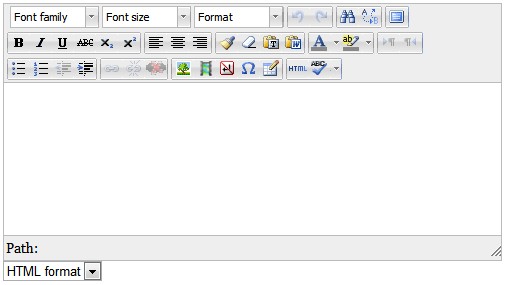

- #Moodle style and javascript in plain text editor update#
- #Moodle style and javascript in plain text editor code#
using text colours with low contrast to the background ( colours must meet WCAG AA contrast ratios).underlining anything that isn't a link.If you want to use these features, please switch to using the TinyMCE editor. The Atto editor doesn't allow you to set fonts, font colour or font size. The default text editor in Moodle is the Atto editor. If you have a specific question about the tool please contact the Digital Education team.
#Moodle style and javascript in plain text editor update#
If you find any inaccurate or missing information you can even update this yourself (it's a communal wiki). Plain text area: removes all rich text functionality, so you can either write plain text or HTML (note: the HTML edit function in both text editors also allows you to edit HTML directly).įurther guidance on the text editor is available from moodledocs.TinyMCE HTML editor: has some more advanced table editing features and supports right-click.Either keep the text editor set to Default editor to ensure you are always using the supported text editor (Atto), or otherwise choose:.Within User Account, click Editor preferences.Hover over your name in the top right corner of any Moodle page and select Preferences.

You can choose to use Atto or the TinyMCE text editor, however, it is recommended you use Atto, since it has a number of accessibility features not available in TinyMCE and is the editor being actively developed by Moodle HQ and the wider Moodle community. The default Moodle text editor is called Atto. Read more at How do I set my prefered text editor? 7.3 Adhere to the UK Equality Act - If a student with a disability requests an accessible format of any resource, this must be provided, within reason.to provide pop-up help) warn the students by labelling the link with '(this link will open in new window)'. 7.2 Links open in the same window – so the student uses the browser back button.Resources provided are in accessible formats and 48 hours in advance of lectures where relevant/appropriate.Links are descriptive (avoiding 'click here').Coloured text has high contrast against backgrounds.Fonts are large enough to read (minimum 10pt).Navigation is consistent between modules.Graphics have alternative text (for screen-readers).Layout is clear, with good spacing, including text that isn’t cramped or dense.7.1 Provide accessible learning resources by ensuring:.The UCL Connected Learning Baselinesuggests the following for Accessibility : Students and staff will see the text editor when drafting discussion forum messages, editing user profile descriptions and adding glossary definitions.Īdditionally, Moodle course editors (tutors and course administrators) will be able to use the text editor when writing descriptions for activities they add to Moodle courses and when drafting content in Labels, Pages and Books.
#Moodle style and javascript in plain text editor code#
Pages are used to create a web page to display text, images, audio, video, web links and embedded code (such as Google maps) Who can use it?Īll Moodle users use the text editor wherever they are able to add rich text.


 0 kommentar(er)
0 kommentar(er)
